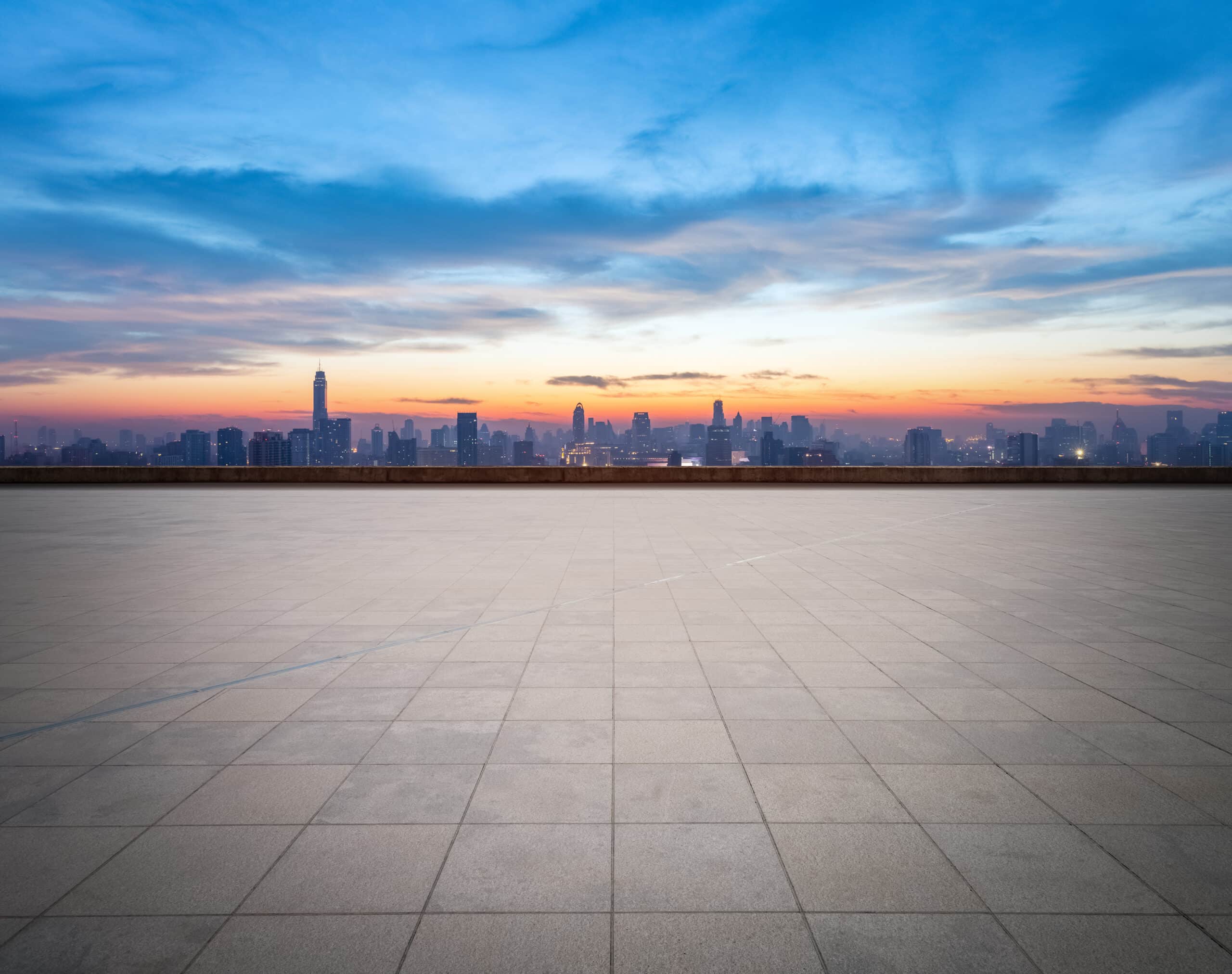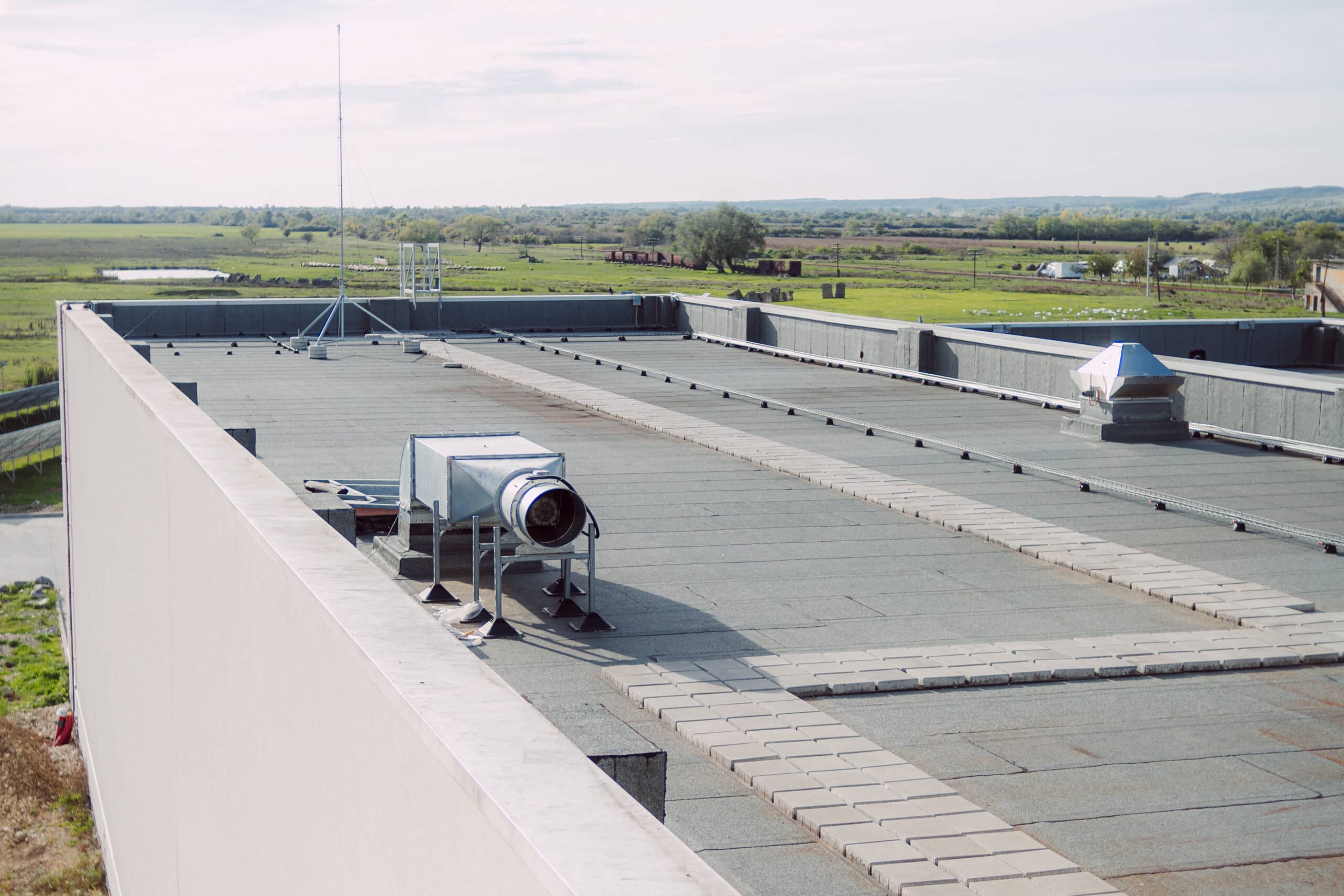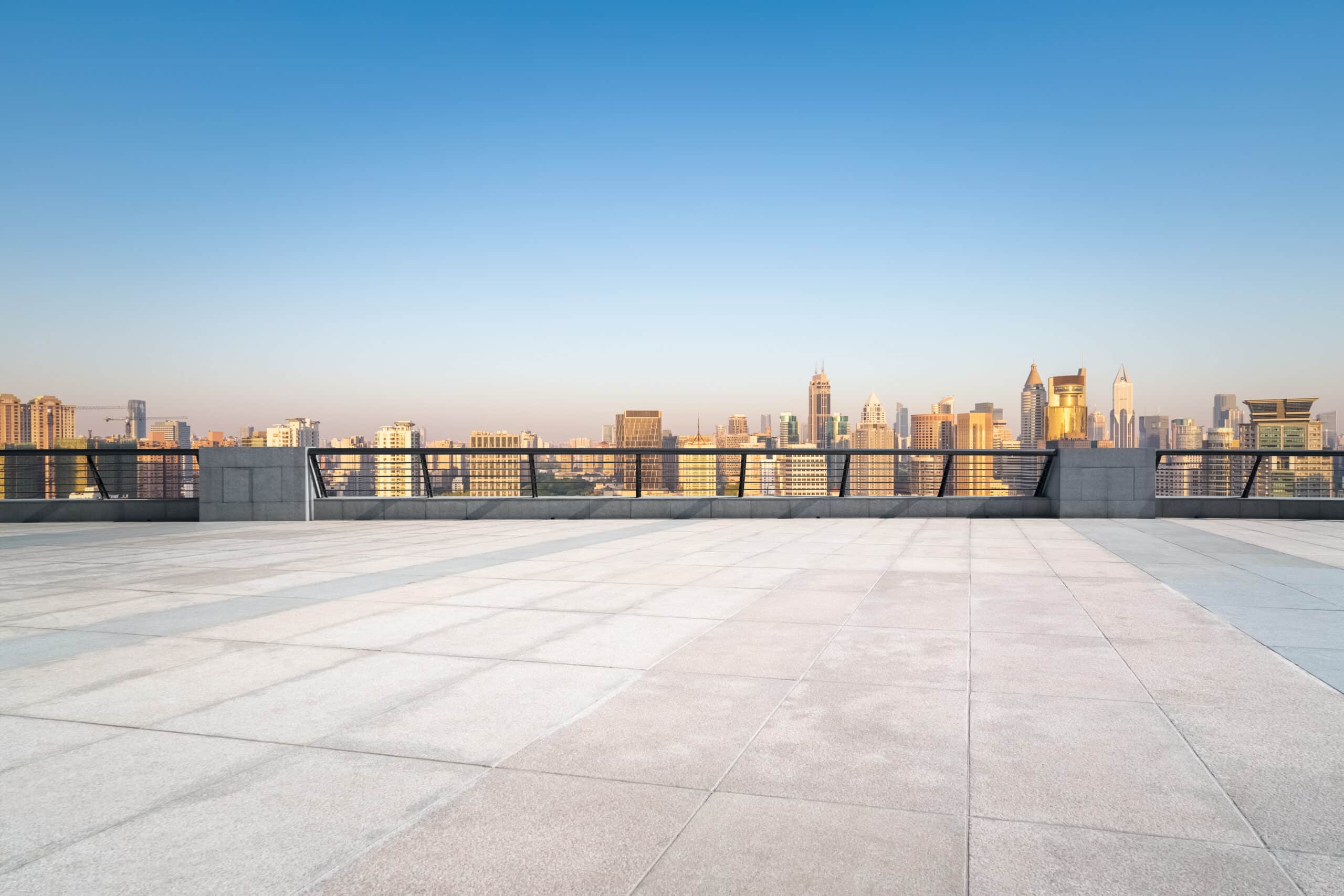As weather patterns around the globe continue to shift towards the extreme, the importance of protecting buildings from these drastic changes has become increasingly essential. As roofing professionals, our focus is providing you with the most durable, weather resistant, and high-quality roof coatings. SmartSeal understand that both commercial and residential properties need reliable protection from the harsh effects of hail, high winds, and torrential rains. It’s with this understanding that we’ve committed ourselves to providing weatherproof roof coatings that are not only long-lasting but can withstand the toughest of weather conditions, ensuring the safeguarding of the structure’s integrity.
Key Takeaways
- Extreme weather patterns necessitate high-quality, durable, and weatherproof roof coatings.
- Both commercial and residential properties can greatly benefit from weather-resistant roof coatings.
- Choosing the right roof coatings can protect the integrity of the property, even in the harshest weather conditions.
- Weatherproof roof coatings provide a protective layer against damage caused by hail, high winds, and heavy rain.
- Long-lasting roof coatings offer a cost-effective solution for maintaining the robustness and durability of building structures in the face of extreme weather events.
The Critical Role of Low-Temperature Flexibility in Roof Coatings
When temperatures take a nosedive, the performance of your roof can be compromised if it lacks the necessary flexibility to adapt. This is where weather-resistant roof coatings play a vital role. As a protector of your most valuable asset, they not only prevent your roof from falling prey to the ravaging effects of the cold but also fortify it with long-term sustainability. The critical aspect to consider, apart from simply insulating your roof with a mask, is to choose a coating that performs exceptionally well under the strain of winter’s harshest conditions.
Understanding Roof Coating Brittle Points
With winter comes unavoidable freezing temperatures that put your roof coating’s low-temperature flexibility to the test. A brittle point is essentially the temperature below which a coating loses its flexibility and becomes susceptible to cracks, leaks, and potentially severe structural damage. It’s important to ensure that your chosen roof coating’s brittle point is lower than the coldest temperature your region experiences during winter. This way, you can rest easy knowing your home remains properly insulated and protected, no matter how low the mercury dips.
Advantages of Elastomeric Roof Coatings in Freezing Climates
When it comes to superb performance and resilience under freezing climates, elastomeric roof coatings lead the pack. These coatings are renowned for their ability to stretch and bounce back without undergoing structural changes, a characteristic that’s pivotal during the rigorous cycle of thawing and freezing. Moreover, their unmatched low-temperature flexibility helps them resist instances of cracking and peeling that often plague other types of roof coatings, offering an extra layer of protection against winter’s icy clutches.
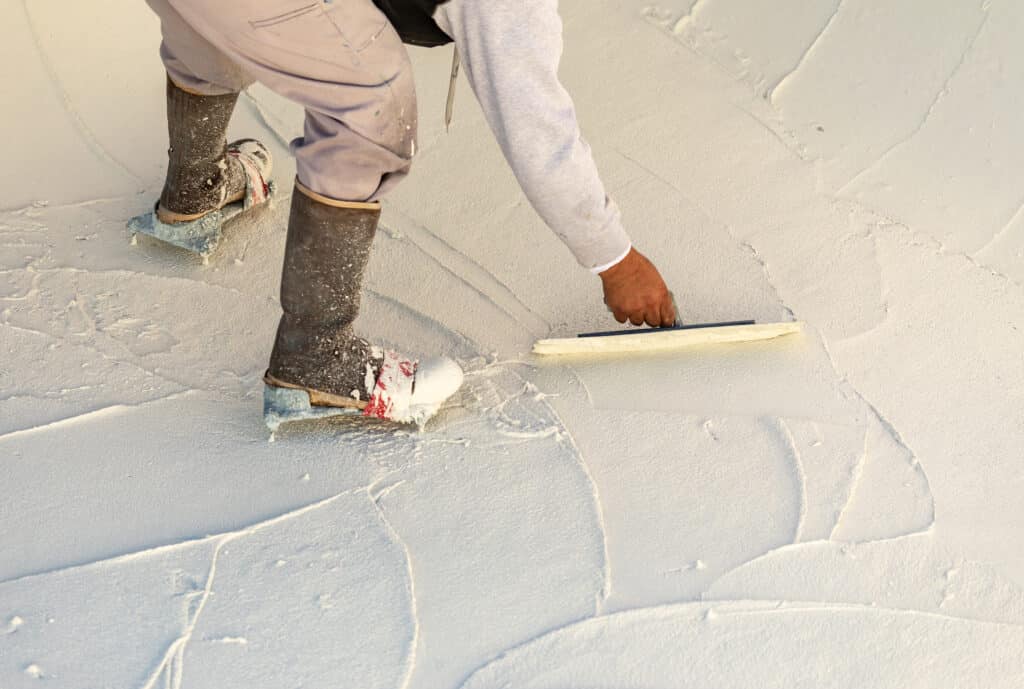
Selecting Roof Coatings for High Snow and Ice Regions
In regions where heavy snowfall and ice are common, choosing the right roof coating is even more crucial. Beyond weather-resistant qualities, the coating should be able to bear the additional weight that accumulates as snow piles up on your roof. Elastomeric roof coatings particularly excel in this aspect, thanks to their inherent tensile strength and cracking resistance.
Understanding these specifics of roof coatings and implementing the right solution allows homeowners in colder climates to safeguard their homes effectively. As we emphasize on the importance of low-temperature flexibility, let’s take a quick look at how various types of roof coatings fare in a comparative analysis:
| Type of Roof Coating | Low-Temperature Flexibility | Resistance to Brittle Points | Capability to Bear Snow Weight |
|---|---|---|---|
| Elastomeric Roof Coating | Exceptional | High | Excellent |
| Asphalt Roof Coating | Average | Medium | Good |
| Silicone Roof Coating | Good | High | Very Good |
| Acrylic Roof Coating | Good | Medium | Good |
Considering the crucial role of low-temperature flexibility, it’s clear that choosing the right roof coating can significantly enhance your roof’s performance during the cruel winter months. As always, it’s best to consult with a professional to make the most informed decision suitable for your specific roofing needs.
How to Identify High-Quality Weather Resistant Roof Coatings
When it comes to selecting a roof coating that can withstand the test of time and the rigours of adverse weather, one must pay attention to certain key characteristics. These characteristics ensure the coating’s resilience, durability, and versatility in preserving the structural integrity of your roof. In this section, we shed light on three crucial factors you should consider when scouting for superior weather resistant roof coatings.
Evaluating Elastomeric Base Components
An integral quality to look out for in durable roof coatings is having an elastomeric base. These bases are elastic, meaning they have the ability to stretch and flex without breaking – highly useful in fluctuating weather conditions. Whether tormented by hale, assaulted by heat or pierced by heavy precipitation, an elastomeric base will allow your roof to flex according to the conditions and then return to its original form when normal conditions are restored.
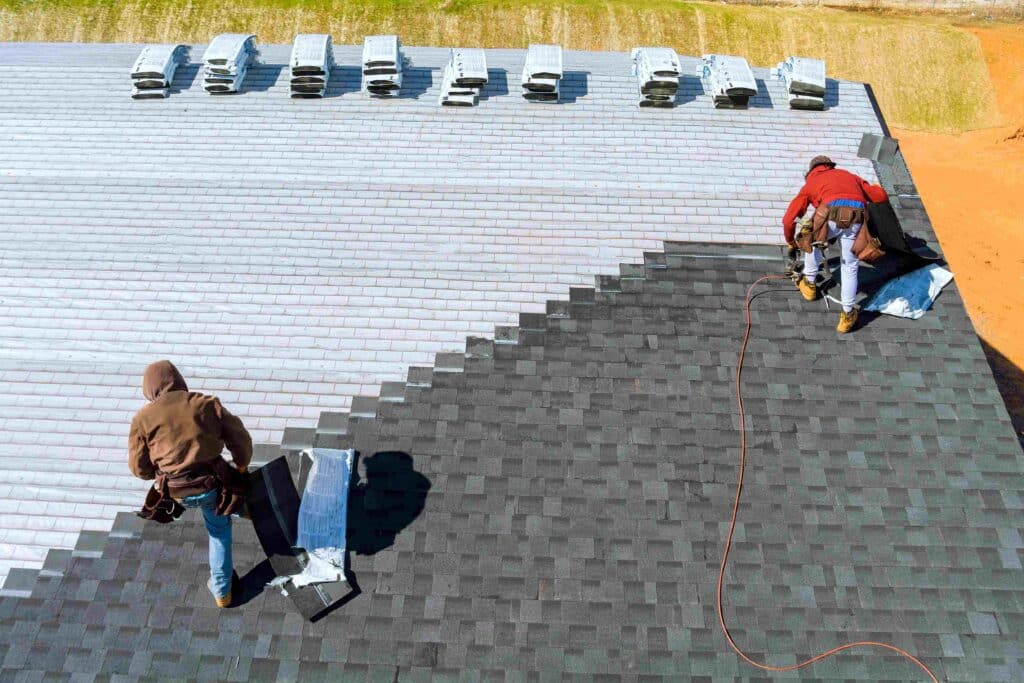
Checking for High Solids Content for Durable Roof Coatings
Another component that signifies superior quality in weather resistant roof coatings is a high solids content. A robust ratio of solids in the solution, when applied, evaporates less and leaves behind a thicker, more robust layer. This results in a hardy coating that is both sturdy and reliable, boosting the endurance of your roof against the elements.
Benefits of UV Resistant Topcoats for Longevity
Last but certainly not least, a UV-resistant topcoat can substantially enhance the longevity of the coating. Not only does a UV-resistant coating screen your roof from the sun’s scathing rays but it also fortifies the coating’s resistance to frigid weather conditions. Coupled with the protection provided by the elastomeric base and the high solids content, a UV-resistant coating ensures a potent defense against a vast spectrum of weather conditions.
| Feature | Benefits |
|---|---|
| Elastomeric Base | Grants the coating flexibility to withstand fluctuations in weather conditions. |
| High Solids Content | Contributes to a thicker, more resilient layer of coating, resulting in increased durability. |
| UV Resistant Topcoat | Shields the roof from the sun’s harsh rays, enhancing the coating’s lifespan and its resistance to cold weather. |
In conclusion, identifying top-notch weather resistant roof coatings involves careful scrutiny of these key components: an elastomeric base, high solids content, and a UV-resistant topcoat. When all these factors coalesce, they produce a superior, long-lasting roofing solution equipped to stand firm against extreme weather events. So next time you’re out shopping for roof coatings, remember to check for these indispensable qualities.
SmartSeal leads the way for exceptional commercial roof coating in Groveland, FL. Reach out now to begin your project with us.
FAQs
Why are weather-resistant roof coatings important?
As weather patterns become more extreme, the importance of using protective measures such as weather-resistant roof coatings for buildings has increased significantly. Such coatings provide a protective layer that helps maintain the integrity of a building during severe weather events including hail, high winds, and heavy rain.
What is the role of low-temperature flexibility in roof coatings?
Low-temperature flexibility in roof coatings is critical particularly in cold climates where temperatures can cause roof coatings to become brittle and crack. This can lead to serious long-term issues. Elastomeric roof coatings, which can stretch and flex without breaking, are ideally suited for such conditions.
How can one identify high-quality weather-resistant roof coatings?
Several factors can be evaluated to identify high-quality weather-resistant roof coatings. The base of the coating should be elastomeric; it should have a high solids content for durability; and a UV-resistant topcoat that can protect the roof from the sun’s harsh rays and improve its ability to endure cold weather.
What types of roof coatings are most effective against extreme heat?
Extreme heat can cause substantial damage to roofing materials. Therefore, energy-saving and UV-resistant roof coatings such as reflective coatings and cool roof technologies are highly effective. These coatings reduce heat absorption, thereby reducing cooling costs and addressing environmental concerns.
How can choosing the right roof underlayment help with extreme weather conditions?
When dealing with extreme weather conditions, choosing the right roof underlayment is as crucial as the external coatings. Synthetic and rubberized asphalt underlayment surpass traditional asphalt-saturated felt in durability and protection. These options perform better under extreme temperatures, acting as a secondary barrier against moisture.
How can roofs be made more resilient to storms and hurricanes?
Strengthening roofs to withstand storms and hurricanes involves the use of storm-resistant materials and techniques. Materials such as impact-resistant shingles and metal roofing offer greater resilience against high-speed winds, debris, and hurricanes.
What solutions can help protect roofs against hail damage?
Adopting hail-resistant roofing solutions such as metal roofing or shingles with a Class 4 impact rating help in mitigating hail damage. These materials are tested rigorously for their strength and resistance to extreme weather conditions, leading to longer roof lifespan and potential insurance savings.
How can roofs be prepared for harsh winter weather?
Preparing roofs for harsh winter weather includes thorough inspections for pre-existing damages, maintenance to correct vulnerabilities, and a focus on insulation and ventilation. Such efforts, coupled with the use of the right roof coatings, can save a roof from damaging impacts that could compromise its structure.
What are the benefits of elastomeric roof coatings?
Elastomeric roof coatings are highly beneficial for aging and weakened roofs. They offer a resilient barrier flexing with temperature changes and help withstand the forces of severe weather. They also have increased reflectivity, which reduces roof temperatures during hot weather, leading to reduced cooling costs and energy savings.

